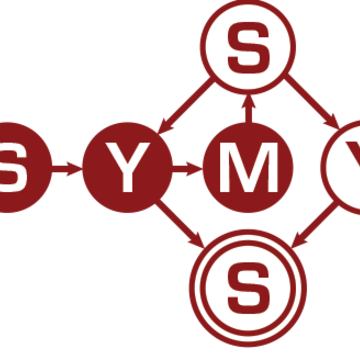SSP Forum: Danya Adib, Leyla Kursat, and Zen Wu (M.S. Candidates),

The
Symbolic Systems Forum
presents
MoneyMouth: A Computational Analysis of Altruistic Crowdfunding Success on GlobalGiving.org
Danya Adib (M.S. Candidate)
Symbolic Systems Program
Evaluating models of referring expression production on an emerging sign language
Leyla Kursat (M.S. Candidate)
Symbolic Systems Program
and
Causal Distillation for Language Models
Zen Wu (M.S. Candidate)
Symbolic Systems Program
Monday, May 23, 2022
12:15-1:45 pm (Note longer time period)
Margaret Jacks Hall (Bldg. 460), Room 126
NOTE: Due to Covid-19 restrictions on building occupancy, only current Stanford students, faculty, and staff may attend this event live
ABSTRACTS:
MoneyMouth: A Computational Analysis of Altruistic Crowdfunding Success on GlobalGiving.org, Danya Adib (Primary Advisor: Jeff Hancock, Communication)
NGOs often face knowledge barriers regarding how to write effective fundraising requests on crowdfunding platforms. This motivates the use of mixed computational methods to 1) identify the linguistic features associated with successful campaigns and 2) predict whether a campaign will be successful or not. Pearson correlation coefficients calculated on GlobalGiving.org projects suggest that features related to community-based thinking, storytelling, and readability are associated with campaigns that reach their target fundraising amount. The logistic regression model's most heavily-weighted linguistic features for the most part corroborate those results. The fine-tuned BERT model performed slightly better than the logistic regression at predicting a crowdfunding campaign's success.
Evaluating models of referring expression production on an emerging sign language, Leyla Kursat (Primary Advisor: Judith Degen, Linguistics)
(Joint work with Brandon Waldon, Rabia Ergin, & Judith Degen.) Redundant modification in referring expression production varies both within language (e.g., English speakers pro- duce more redundant color than size modifiers) and cross- linguistically (e.g., English speakers produce more redundant color modifiers than Spanish speakers). It is an open question whether these asymmetries are the result of asymmetries in the general referential utility of color and size modifiers or of incremental language processing pressures. Cross-linguistic investigations of redundant modification are important to this debate: similar cross-linguistic rates of redundant modification would suggest a strong role for general referential utility. In contrast, lower prevalence of redundant modification in languages with post-nominal modification suggests a strong role for incrementality. Here, we test whether differences in redundant adjective use are systematic for a particularly interesting language: Central Taurus Sign Language. As a language in its infancy, CTSL has no established conventions, and therefore provides us with a unique opportunity to explore how redundancy emerges in the initial stages of language formation. We evaluate different computational models of referring expres-sion that each make different assumptions regarding the source of asymmetries in the production of redundant modifiers.
Causal Distillation for Language Models, Zen Wu (Primary Advisor: Chris Potts, Linguistics; Second Reader: Noah Goodman, Psychology)
Distillation efforts have led to language models that are more compact and efficient without serious drops in performance. The standard approach to distillation trains a student model against two objectives: a task-specific objective (e.g., language modeling) and an imitation objective that encourages the hidden states of the student model to be similar to those of the larger teacher model. In this paper, we show that it is beneficial to augment distillation with a third objective that encourages the student to imitate the causal dynamics of the teacher through a distillation interchange intervention training objective (DIITO). DIITO pushes the student model to become a causal abstraction of the teacher model -- a faithful model with simpler causal structure. DIITO is fully differentiable, easily implemented, and combines flexibly with other objectives. Compared against standard distillation with the same setting, DIITO results in lower perplexity on the WikiText-103M corpus (masked language modeling) and marked improvements on the GLUE benchmark (natural language understanding), SQuAD (question answering), and CoNLL-2003 (named entity recognition).
A NOTE ON THE RECORDING OF EVENTS:
If a decision has been made in advance to record an event and to make it available for later public viewing, the event announcement will usually state this. In many cases, however, decisions to record, and/or to make a recording available publicly, are not finalized before an event is announced. Availability decisions for recordings are often subject to what speakers prefer after an event has concluded, among other considerations that may include usage rights for material used in an event, as well as the need for, and practicality of, editing. When recordings are made publicly available, they will be linked within the original event announcement on the Symsys website in the days or weeks following an event. Unfortunately, we cannot follow up on individual requests for more information about whether and when a recording may become available if it is not yet posted publicly.